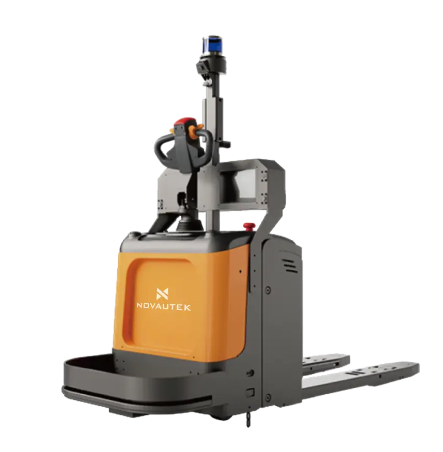From Manual to Autonomous: The Evolution of Material Handling
Looking back at how warehouses changed from relying on people doing all the heavy lifting to today's automated systems tells quite a tale about tech progress. Back in the day, warehouse staff spent hours sorting through boxes, lifting heavy loads, and moving inventory around, which was not only tiring but also prone to mistakes. Forklifts came along as game changers, taking some weight off workers' shoulders literally. But things really started changing when robotics and AI entered the scene. We've seen warehouses adopt autonomous systems now, like those self-driving forklift robots that can navigate on their own while picking up and dropping off goods faster than any human crew could manage. Industry reports show just how fast this trend is growing too - demand for these automated solutions has jumped by 25% in ten years alone. What does this mean for the future? Warehouses will keep getting smarter and require fewer hands-on jobs, though there will always be roles needing human oversight and problem solving.
Core Advantages Over Traditional Forklifts
Self-driving forklifts bring quite a few perks compared to the old fashioned manual ones, especially when it comes to getting more done faster inside warehouse environments. A big plus is cutting down on running costs since these machines can operate around the clock without needing breaks or rest periods. They run on smart software and artificial intelligence that tells them exactly where to go and what to do next. Another major benefit relates to keeping track of stock levels accurately. These automated vehicles collect information constantly while moving through the facility, which means inventory counts stay up to date automatically most of the time. Less chance of mistakes happens this way too. Warehouses that switched to autonomous forklift tech report seeing real improvements in output numbers. One particular case showed about 30 percent higher productivity after implementing this kind of equipment. While there are still some challenges to overcome, many industry experts believe we're looking at a complete transformation of how goods get stored and managed going forward.
Key Benefits of Autonomous Forklift Systems
24/7 Operational Efficiency and Productivity Gains
Autonomous forklifts really boost efficiency and productivity since they just keep going non-stop without needing any breaks at all. Warehouses can handle way more goods because these machines work day and night while regular workers need time off for meals and sleep. Some warehouse managers report seeing big gains after switching to autonomous systems. The numbers show orders get filled faster and tasks take less time overall. Another great thing about these automated systems is how easy it is to scale operations up or down depending on what's needed. When business picks up, there's no rush to hire extra staff right away since the forklifts can simply handle the increased workload themselves.
Solving Labor Shortages Through Automation
Logistics companies across the country are struggling with serious worker shortages right now, which makes automated systems absolutely essential for filling these gaps. Automated machinery handles all sorts of repetitive work and heavy lifting jobs that people used to do manually. Many businesses have already seen success when they brought in self-driving trucks or robotic warehouse assistants to deal with staffing problems while keeping their operations running smoothly during tough hiring conditions. Plus, when machines take over routine tasks, companies can actually shift their employees into better positions where they need to think critically and make important decisions instead of just following orders all day long. This not only improves productivity but also creates a more skilled and valuable workforce overall.
Enhanced Safety in Dynamic Warehouse Environments
The safety improvements brought by autonomous forklifts really stand out because they cut down on human mistakes so much in those complicated warehouse settings. These machines come equipped with things like smart sensors that spot obstacles and emergency stops that kick in when needed. The result? Warehouse safety has changed completely since these systems came onboard, and accident numbers have dropped dramatically. Take a look at actual warehouse data: places that switched to autonomous tech saw their accident reports drop by around 40% in some cases. Beyond just preventing accidents, these safety features work hand in hand with constant monitoring systems. This means warehouses run smoother while keeping everyone on site much safer than before.
Real-World Implementations: Case Studies
DHL's Multi-Robot Warehouse Ecosystem
DHL is really pushing forward with automation in their warehouses by bringing together different kinds of autonomous robots to handle all sorts of warehouse jobs. They've partnered up with companies like Fox Robotics, Boston Dynamics, and Locus Robotics to tackle those tough warehouse challenges. One big area they're focusing on is trailer unloading, which traditionally takes a lot of manpower and has always been hard to staff properly. The company now uses robotic forklifts, machines that take boxes off pallets, and these mobile bots that pick items from shelves. These changes have helped boost how much stuff moves through their facilities each day, especially during times when finding enough workers was becoming problematic. Looking at their own numbers, there's been measurable gains in getting work done faster and saving money overall, making DHL an interesting case study for other warehouses thinking about going automated.
Amazon's Fleet Optimization Strategy
The way Amazon handles its logistics really shows off their use of autonomous tech, especially those self-driving forklifts that are part of their big picture plan for optimizing warehouse fleets. These automated systems let them strike a good balance between robot work and managing their human staff on the floor. Looking at the numbers they've shared, there's definitely faster shipping and better productivity overall, which makes sense given all those robots working side by side with people. What's interesting is how this whole setup reflects Amazon's dedication to keeping things running smoothly in their warehouses while also showing just why these robotic systems help get packages out the door so quickly and accurately most of the time.
Technology Behind Autonomous Forklift Operations
Sensor Fusion for Precision Navigation
Modern autonomous forklifts use what's called sensor fusion tech to get around those tricky warehouse spaces. These machines gather information from all sorts of sensors including LiDAR, regular cameras, and even ultrasonic devices. When put together, this mix creates a pretty solid navigation system for the forklift. Take LiDAR for instance it gives really good distance readings. Cameras meanwhile help spot things visually so the machine knows where obstacles are located before running into them. Putting all these different sensor signals together makes a big difference in how accurately these robots move around without making mistakes. Warehouse managers have noticed something interesting too studies indicate that when companies implement proper sensor fusion techniques, their autonomous systems perform about 90% better in terms of navigation. That kind of improvement means fewer accidents and smoother day to day operations in facilities across the country.
AI-Driven Load Management Systems
AI has become really important for managing loads on those self-driving forklifts around warehouses these days. The systems actually use machine learning stuff behind the scenes to make better decisions about where and how to place cargo. These smart systems look at past performance data alongside what's happening right now to figure out the best way to stack and move things around. This helps cut down on waiting times and gets operations running smoother overall. We've seen some pretty good examples of this working well in practice. One big distribution center saw their workflow speed up by about 20% once they started using AI to optimize how their forklifts handled loads. Makes sense why more companies are jumping on board with this technology for their logistics needs.
Integration With Warehouse Management Platforms
For autonomous forklifts to work well in warehouses, they need to integrate smoothly with Warehouse Management Systems (WMS). Most modern forklift models come ready to connect with major WMS platforms, which means they can talk to these systems in real time and share important information back and forth. When everything works together properly, it keeps operations running without hiccups, makes tracking inventory much easier, and cuts down on the need for workers to manually check things. Companies that get their autonomous forklifts talking to their WMS systems tend to see better results across the board. Industry data shows warehouses that have made this connection report around 30% improvement in how they manage stock levels. That kind of boost speaks volumes about why getting these systems to work together is such a smart move for warehouse managers looking to improve performance.
Challenges and Future Developments
Scalability Considerations for Large Facilities
Scaling up autonomous forklift tech in big warehouses comes with its own set of problems. When these facilities expand, operators run into real headaches trying to build out the necessary infrastructure while also managing bigger fleets of self-driving machines. Getting this stuff working right often means overhauling existing networks and investing in better fleet management tools. According to Gartner research, around 70 percent of major warehouses are expected to have some level of automation by 2025, which really highlights how important scalability has become in warehouse automation today. Infrastructure upgrades typically involve adding more charging points across the facility plus installing sophisticated communication systems that can handle all those autonomous vehicles at once. Looking ahead, warehouse managers are increasingly focused on developing flexible autonomous systems that can keep pace with the growing needs of massive distribution centers without breaking down under pressure.
Emerging Innovations in Fleet Coordination
Getting better at managing groups of autonomous forklifts makes a big difference in how well warehouses operate. One major area where things are changing involves smarter coordination systems, especially those based on something called swarm robotics. Basically, swarm robotics works when multiple robots act together like a team instead of individually. This approach could completely change how warehouses run because it helps distribute workloads more evenly across all the machines. Researchers are still working out the details, trying different algorithms so that forklifts can actually collaborate on complicated tasks rather than just following individual instructions. A recent report from ABI Research suggests that the market for swarm robotics will expand quite a bit over the next few years. This growth points to an industry moving toward more intelligent fleet management solutions. Warehouse managers who want their operations to stay competitive need to keep an eye on these developments if they want their facilities to remain agile and responsive to changing demands.
FAQ
What are the main benefits of autonomous forklift robots?
Autonomous forklift robots offer several advantages, including 24/7 operational efficiency, cost reduction, enhanced safety, and improved accuracy in inventory management.
How do autonomous forklifts improve safety in warehouses?
They utilize advanced features like obstacle detection and emergency stop functionalities, significantly lowering accident rates and enhancing overall safety in dynamic warehouse environments.
What is the role of AI in autonomous forklifts?
AI-driven systems enhance load management and decision-making processes by analyzing data for optimal loading paths, reducing delays, and maximizing efficiency.
Are autonomous forklifts scalable for large warehouse facilities?
While there are challenges, autonomous forklifts can be scaled to large facilities with appropriate infrastructure adaptations, such as enhanced network capabilities and fleet management systems.

